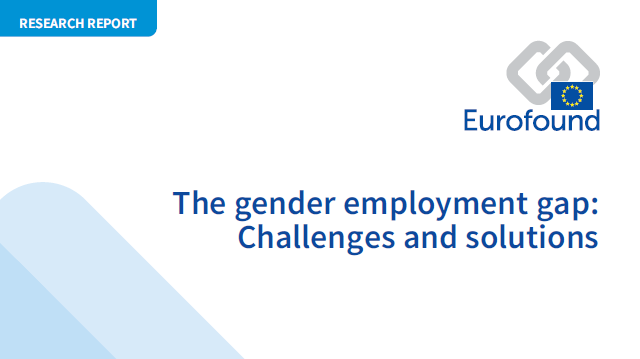
News -
Gender employment gap costs Europe €370 billion per year
Despite a continued increase in the female activity rate in Europe during the recent financial crisis and a narrowing of the gender participation gap in most Member States, a significant gender employment gap remains. With the female employment rate still more than 10% lower than the male equivalent, the cost of this -including foregone earnings and missed welfare contributions of individuals to the society, as well as the public finance cost, comprising individual welfare transfers and social benefits - is now estimated at around €370 billion, corresponding to 2.8% of the EU’s GDP.[1] At an individual level, the cost of a woman’s exclusion from employment throughout her working life is estimated at between €1.2 million and €2 million, depending on her educational level. These findings are detailed in the new report The gender employment gap: Challenges and solutions, presented to the European Parliament’s Women’s Rights and Gender Equality Committee in Brussels today.
The report details the main characteristics of gender gaps in labour market participation, employment and economic status. It looks at the main determinants of female labour market participation and studies the social effects of women’s participation in the labour market, as these effects go beyond the economic sphere and extend to people’s well-being and to society as a whole. Finally, it provides an overview and assessment of the effectiveness of policy measures promoting the labour market participation of women in six Member States, highlighting particularly successful and innovative cases.
A number of immediate and long-term policy recommendations are included to close the gender employment gap. It recommends policies to create incentives for employers to increase labour market participation, providing adequate and affordable childcare support, ensuring parental and adult care leave, as well as increasing the provision of flexible working arrangements. On a broader level, it emphasises the importance that employers see women as a crucial segment of their workforce, and that care responsibilities and the adaptations needed to help them reconcile these with work are not a ‘women’s problem’ but an area for action from which the workforce as a whole, as well as the employer, can benefit.
The report is an important resource for policymakers, businesses and employee representativeness in addressing, and ultimately eliminating, the lower female employment rate in Europe. It also carries a broader message that should resonate with all; the gender employment gap represents an economic and social cost that Europe cannot afford, and all actors should work together in order to promote and foster the labour market participation of women.
Click here to download the report.
Click here to download a presentation of the key findings from the report.
[1]This figure does not include an estimation for the economic contribution of women not active in the labour market

